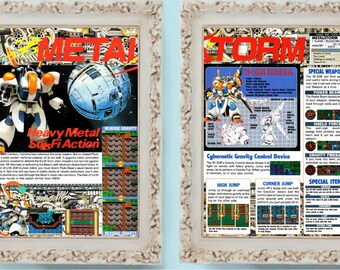
The powerful LaserGun on the planet Pluto's battle station "Cyberg" is wreaking havoc.

The year is 2501, and the dawning of a new century has brought mankind to the brink of disaster. Interestingly, the color palette is different as well, with the Japanese version featuring a lighter-colored mech and environments than in the U.S.
METAL STORM NES GAME INSTRUCTIONS MANUAL
Also, the Japanese version has an extended introduction sequence that shows the backstory, whereas this is relegated entirely to the instruction manual in the U.S. version is called the M-308 Gunner, where it is known as the Storm Gunner M-308 Custom in the Japanese version, and the powerups have different names as well. There are a few minor differences between the two versions.

The Japanese version, titled Jūryoku Sōkō Metaru Sutōmu ( Gravity Armor Metal Storm) was released in the following year. Metal Storm was actually released in the U.S. Gravity flipping has become much more common recently with the indie development scene, with games such as VVVVVV building the entirety of its gameplay around this. Generally, gravity-based gameplay was limited to a particular section of the game, such as Mega Man 5’s Gravity Man stage, and Shatterhand’s Anti-Gravity Research Center. Many developers, even in the 8-bit era, toyed with gravity flip mechanics, but few built their entire games around them.

The game also did not benefit much from its 12-page cover story in Nintendo Power. Metal Storm was never a terribly popular game, despite the fact that it was published by Irem, the company behind R-Type and a longtime publisher/developer of games on the NES. A game by Tamtex and Irem for NES, originally released in 1991.


 0 kommentar(er)
0 kommentar(er)
